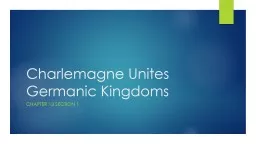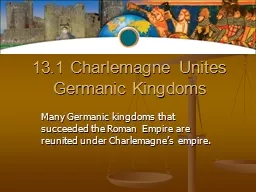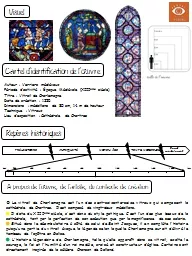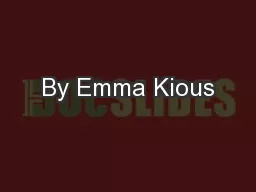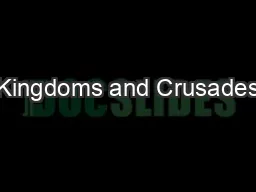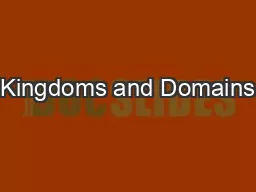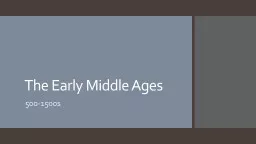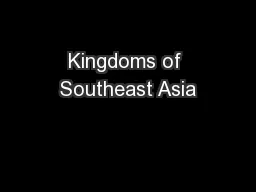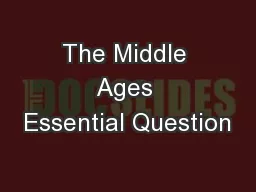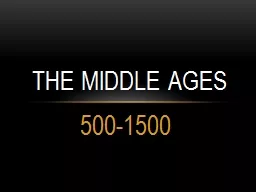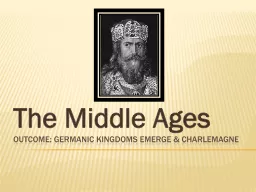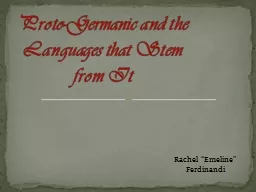PPT-Charlemagne Unites Germanic Kingdoms
Author : tawny-fly | Published Date : 2017-01-24
Chapter 13 Section 1 Invasion of Western Europe Germanic invaders took over the western half of the Roman Empire Constant warfare and invasions caused Disruption
Presentation Embed Code
Download Presentation
Download Presentation The PPT/PDF document "Charlemagne Unites Germanic Kingdoms" is the property of its rightful owner. Permission is granted to download and print the materials on this website for personal, non-commercial use only, and to display it on your personal computer provided you do not modify the materials and that you retain all copyright notices contained in the materials. By downloading content from our website, you accept the terms of this agreement.
Charlemagne Unites Germanic Kingdoms: Transcript
Download Rules Of Document
"Charlemagne Unites Germanic Kingdoms"The content belongs to its owner. You may download and print it for personal use, without modification, and keep all copyright notices. By downloading, you agree to these terms.
Related Documents

